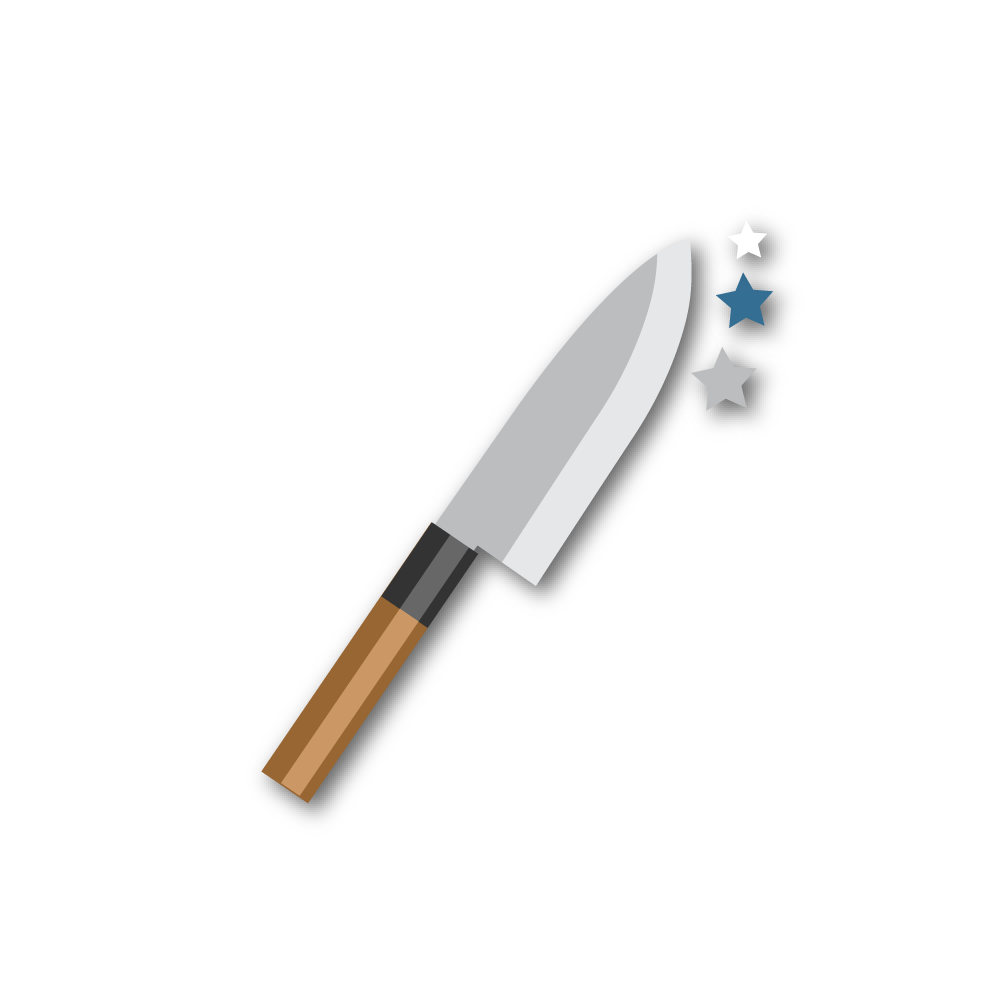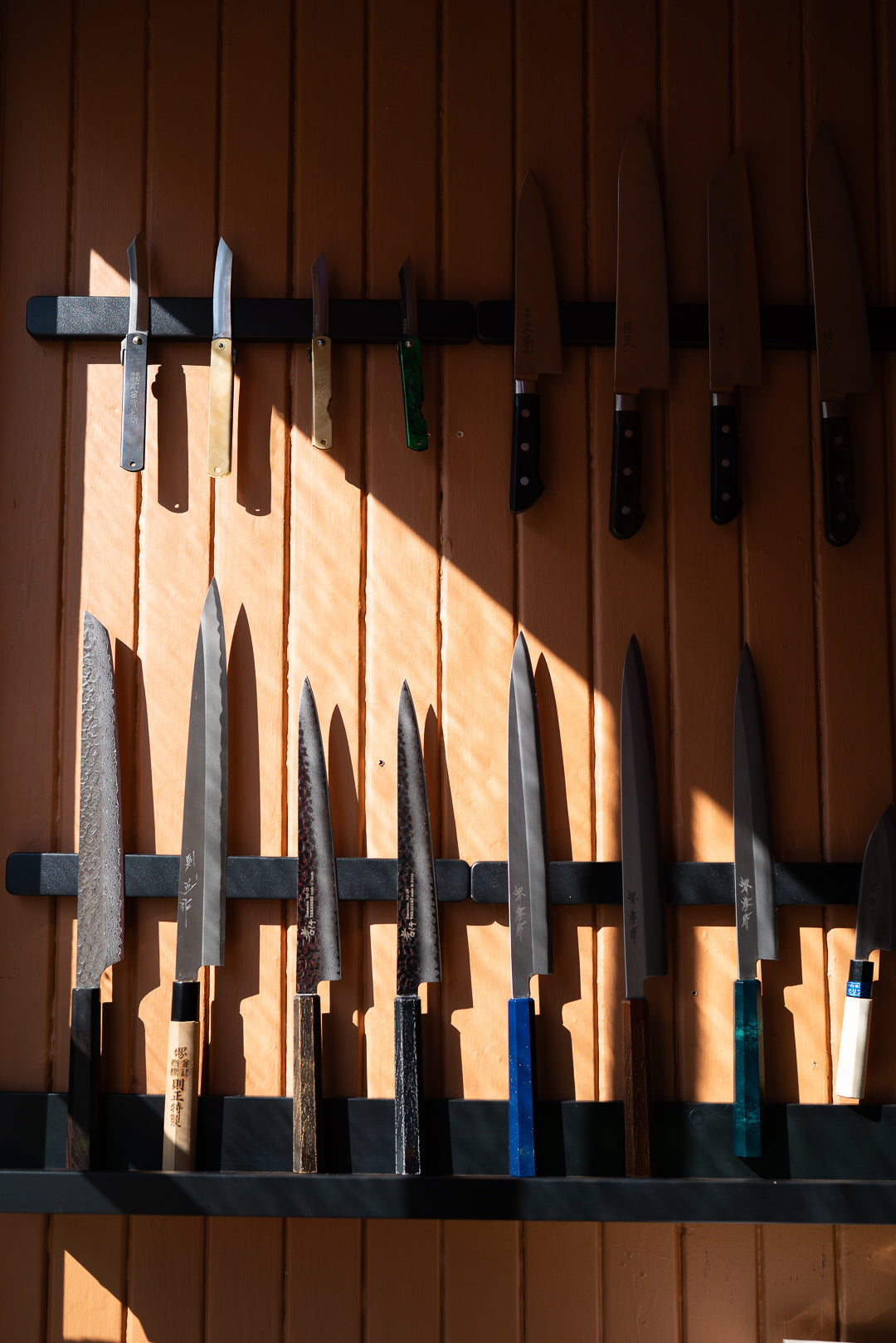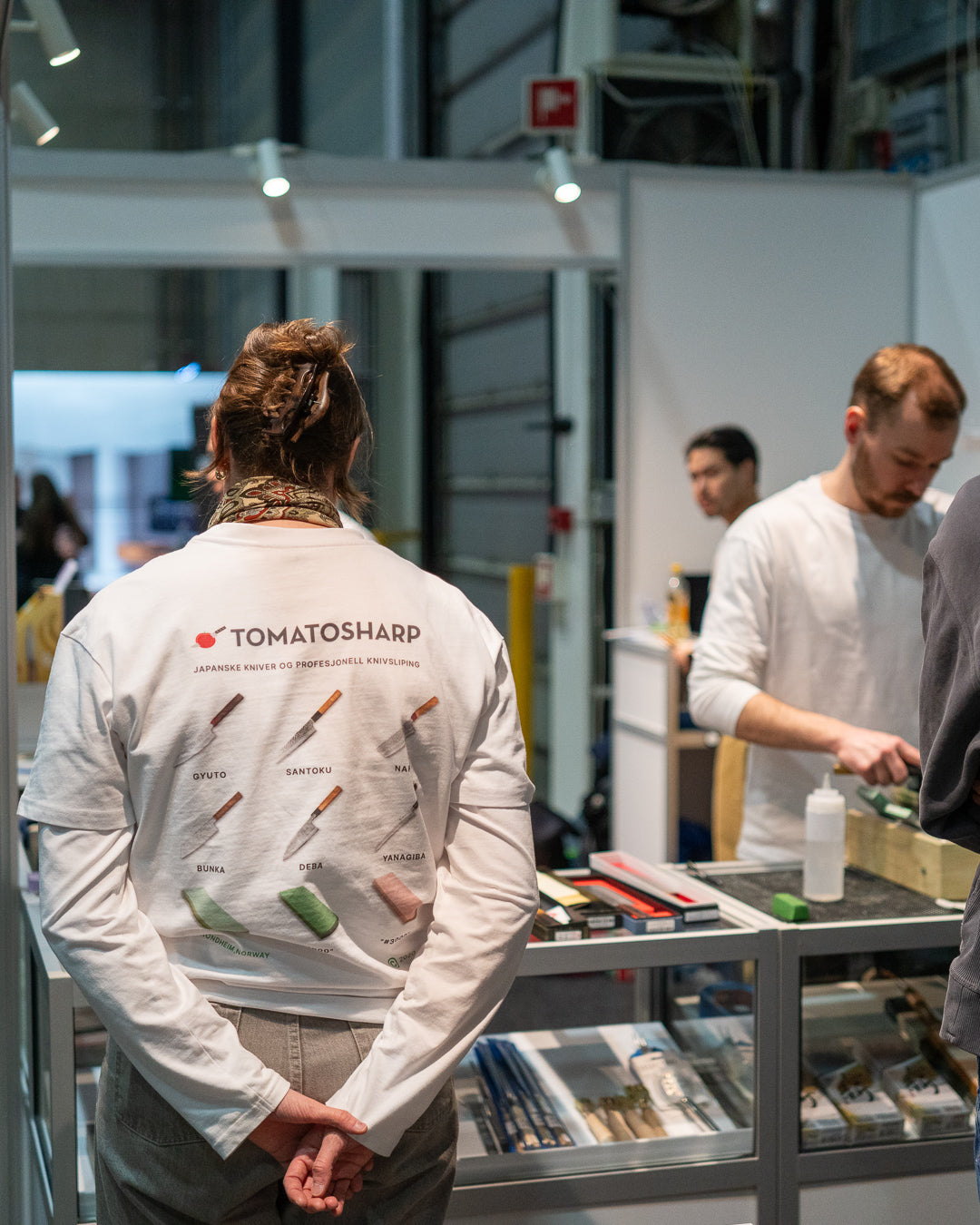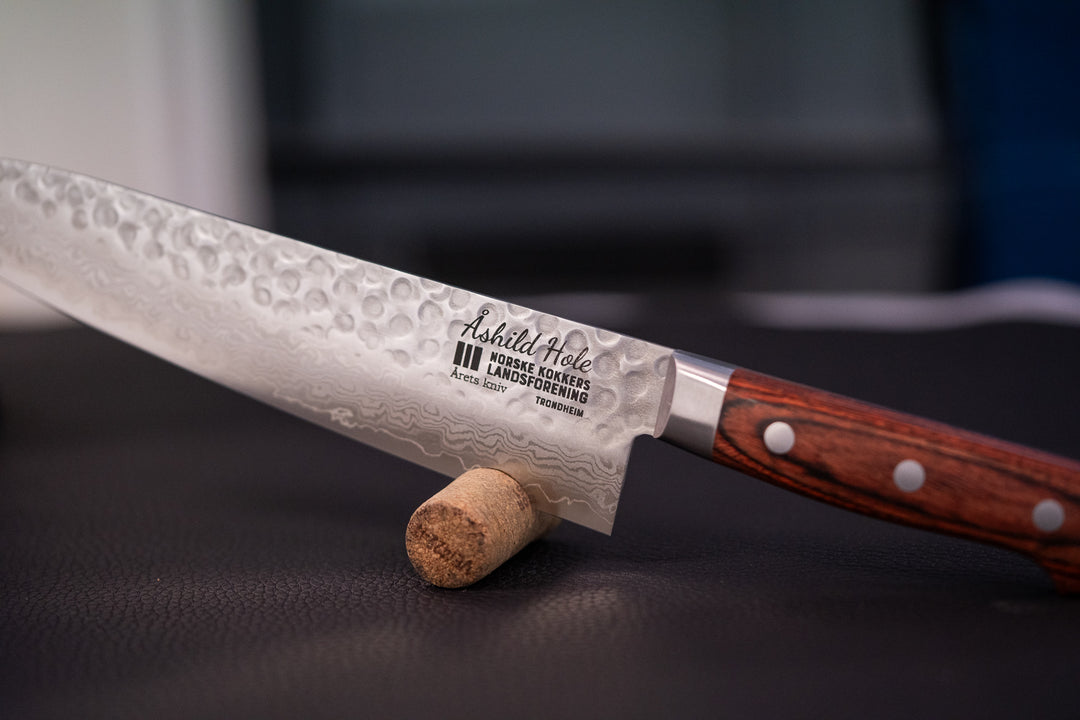HATSUKOKORO Shinkiro Kurouchi Damascus Gyuto 210 mm
- In stock, ready to ship
- Backordered, shipping soon
Shop nå. Betal med Klarna.

- Levering 1-3 virkedager
- Fri frakt over 1000kr
- 30 dagers åpent kjøp
| Knivtype | Gyuto / Chef's knife |
| Bladlengde | 210 mm |
| Høyre-/venstrehendt | For both |
| Slipefase | 50/50 |
| Håndtak | Stabilized maple wood |
| Hardhet | 64-65 HRC |
| Ståltype | Karbonstål |
| Stål | Aogami Super (Blue Super) |
HATSUKOKORO Shinkiro Kurouchi Damascus Gyuto is a fantastic knife for those who want to have some of the very best. The knife is forged in Aogami Super and has a beautiful Damascus pattern, while the knife's surface has "kurouchi", a raw metal finish straight from the blacksmith.
Steel type
Aogami Super is one of the best types of carbon steel from Japan. It contains more carbon, Chromium and Tungsten than, for example, Blue Steel #1. Aogami Super has an excellent ability to stay sharp for a long time, while being able to achieve high hardness without becoming brittle quickly. Aogami Super is considered by knife enthusiasts to be one of the best high-carbon steel types in the world. Over time, the carbon steel will create something called "Patina". This gives the knife a protective layer that becomes somewhat brown-reddish or blue, depending on what you cut.
En gyuto er en tradisjonell japansk kokkekniv som egner seg til alle daglige kjøkkenoppgaver. Den kan sammenliknes med en typisk vestlig kokkekniv, men har ofte en lettere vekt og et tynnere blad.
Kniven har en lang og jevn profil med en spiss tupp, noe som gjør den utmerket for skiving, hakking og finkutting av alt fra fisk, kjøtt og grønnsaker.
Lengden gjør den ofte mer egnet for finskjæring / tranchering da man kan bevare fibrene i ett, rent kutt.
Ansett som et av de beste japanske karbonstålene, med høyere innhold av karbon, krom, wolfram og molybden. Gir en eksepsjonell kombinasjon av skarphet, hardhet og slitestyrke. Rengjør og tørk umiddelbart etter bruk; unngå langvarig eksponering for fuktighet. Over tid vil stålet utvikle en attraktiv patina som beskytter mot korrosjon og gir bladet et unikt utseende.
Bruk
Japanske kniver er vanligvis tynnere og mer delikate enn vestlige kniver, så de er ikke egnet for å kutte gjennom bein, frosne matvarer eller harde gjenstander. Bruk et mykere skjærebrett laget av tre, plast eller gummi og skjær med en rullende bevegelse i stedet for å presse ned med kraft.
Vask og oppbevaring
Vask kniven for hånd med mild såpe og varmt vann umiddelbart etter bruk. Tørk kniven med en myk klut eller et kjøkkenhåndkle for å forhindre rust. Oppbevar kniven på en sikker og tørr plass når den ikke er i bruk. Bruk gjerne en knivblokk, magnetisk knivholder eller knivslirer for å forhindre skader på eggen. Les mer
Vedlikehold
Vi anbefaler å bruke en keramisk brynestav i kombinasjon med en lærstropp for å vedlikeholde / skjerpe eggen. Dette gjør at kniven holder seg skarp mye lenger før den må slipes på stein. Ved sliping anbefaler vi våtslipesteiner for å få best resultat, samtidig som at man fjerner minimalt med materiale.

























